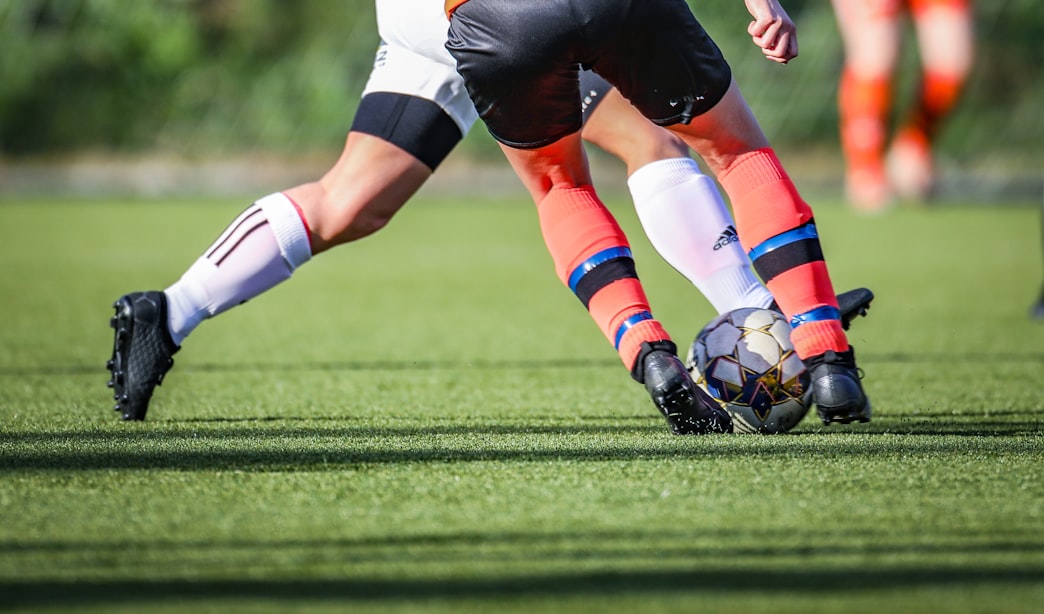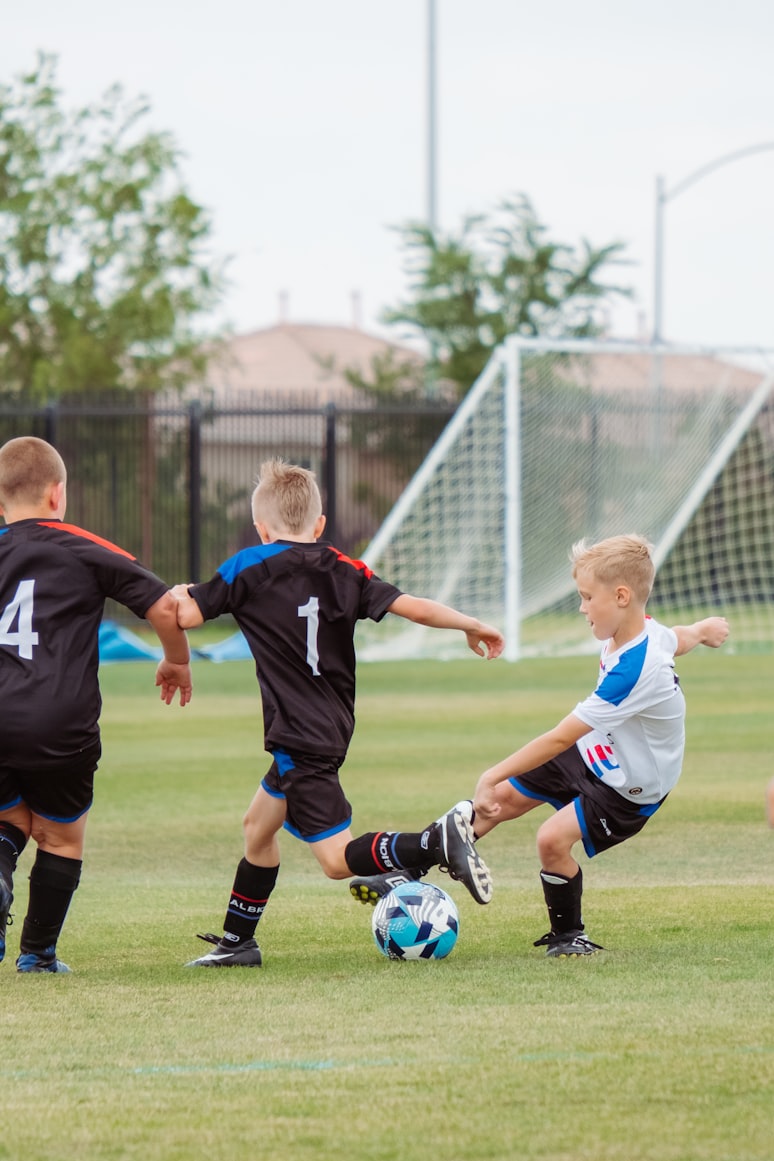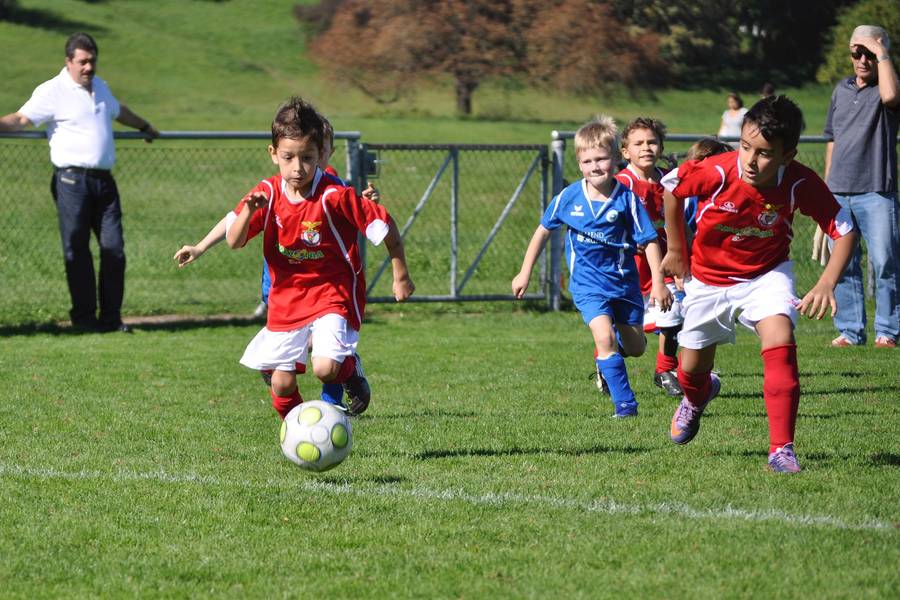In modern football, the inverted fullback is a tactical position that has gained popularity in recent years. This position involves a fullback moving into central areas of the pitch to create overloads and provide additional attacking options.
The concept of the inverted fullback is to provide more options for the team in possession, and it can be an effective way to break down opposing defences.
The inverted fullback position requires a player who is comfortable on the ball and has good passing ability. They need to be able to move into central areas of the pitch and create space for their teammates.
The position is most commonly used in a 4-3-3 or 4-2-3-1 formation, but it can be adapted to suit other formations as well.
Teams and coaches who use the inverted fullback position include Manchester City, Liverpool, and Tottenham Hotspur. It is important to note that the position has its advantages and disadvantages, and it is not suitable for every team or player.
However, with the right players and tactics, the inverted fullback can be an effective way to improve possession, attacking play, and defensive solidity.
Historical Evolution of the Fullback Role
From Traditional to Modern Fullbacks
The fullback position has undergone significant changes over the years. In the early days of football, fullbacks were primarily defensive players whose main responsibility was to prevent the opposition from scoring.
They were positioned behind the half-backs and in front of the goalkeeper in the 2-3-5 formation.
As the game evolved, fullbacks became more involved in the attacking phase of the game. They were given more freedom to move forward and support the attack.
This change was particularly evident in the 1970s when the Brazilian national team employed fullbacks like Carlos Alberto and Jairzinho, who were known for their attacking prowess.
In the modern game, fullbacks are expected to contribute both defensively and offensively. They are required to have good positional sense, be comfortable on the ball, and possess excellent passing skills.
The fullback position has become one of the most important positions on the pitch, with many teams employing attacking fullbacks who can create chances and score goals.
The Influence of Legendary Managers
The evolution of the fullback position can be attributed to the influence of legendary managers like Johan Cruyff and Pep Guardiola.
Cruyff, who managed Barcelona in the late 1980s and early 1990s, introduced the concept of Total Football, which required players to be versatile and comfortable in multiple positions.
Guardiola, who managed Barcelona and Bayern Munich, is credited with popularising the use of inverted fullbacks. This tactic involves fullbacks moving inside to create numerical superiority in midfield.
Philipp Lahm, who played under Guardiola at Bayern Munich, was one of the first players to be used as an inverted fullback.
Dani Alves, who played for Guardiola at Barcelona, is another player who is known for his attacking prowess.
Alves was an integral part of Guardiola's team, providing width and creativity on the right flank. His performances helped Barcelona win numerous titles during Guardiola's tenure.
The Concept of the Inverted Fullback
Definition and Characteristics
The inverted fullback is a modern tactical concept in football that has gained popularity in recent years. This position requires a player to play as a fullback but with a twist.
Instead of staying wide and providing crosses, the inverted fullback moves inside and plays more like a central midfielder. This position has been popularized by top teams such as Manchester City and Liverpool.
Inverted fullbacks are characterized by their ability to drift inside and create space for their teammates. They are also known for their attacking prowess and their ability to contribute to the team's build-up play.
Inverted fullbacks are typically comfortable on the ball and possess good passing ability.
Comparison with Traditional Fullbacks
Compared to traditional fullbacks, inverted fullbacks offer a different set of skills and attributes.
Traditional fullbacks are primarily defensive players who are tasked with stopping opposition attacks down the flanks. They are also responsible for providing width to their team's attacking play.
In contrast, inverted fullbacks are more attacking-minded and are tasked with creating chances for their team. They are comfortable moving inside and contributing to their team's build-up play.
However, their defensive responsibilities are often reduced as they are not required to track opposition wingers down the flanks.
Tactical Applications
Inverted Fullbacks in Different Formations
The inverted fullback position has become increasingly popular in modern football. It is usually deployed in formations such as the 4-3-3 and 4-4-2, where the fullback plays a crucial role in both defence and attack.
In a 4-3-3 formation, the inverted fullback can create an overload in central areas, which can be used to break down opposition defences. In a 4-4-2 formation, the inverted fullback can drop deeper to provide additional cover for the defence.
Role in Possession and Build-Up Play
When the team is in possession, the inverted fullback moves inside to play more like a central midfielder. This allows them to receive the ball in central areas and create passing options for their teammates.
They can also help with build-up play by linking up with the midfielders and forwards. The inverted fullback can also be used to create numerical superiority in midfield, which can help the team to control possession.
Defensive Duties and Transitions
When the team loses possession, the inverted fullback quickly transitions back into a defensive position. They must be able to read the game and anticipate opposition attacks to ensure that they are in the right position to make tackles and interceptions.
The inverted fullback must also be able to quickly transition back into an attacking position when the team regains possession.
Key Exponents of the Inverted Fullback Role
The Inverted Fullback role has been popularized by a few influential players and managers in recent years. This section will take a closer look at some of the key exponents of this role and their impact on modern football.
Influential Players and Their Impact
One of the most notable players who has excelled in the Inverted Fullback role is Kyle Walker. Under the guidance of Pep Guardiola at Manchester City, Walker has been a key component of the team's success in recent years.
His ability to tuck inside and provide an extra passing option in midfield has been crucial in City's possession-based system.
Another player who has made a significant impact in this role is Joao Cancelo. Like Walker, Cancelo thrived under Guardiola's tactical system at Manchester City.
His ability to play as both an Inverted Fullback and a traditional Fullback gave City greater flexibility in attack and defence during his time there.
Trent Alexander-Arnold is another player who has shown the potential to excel in the Inverted Fullback role. While he is primarily known for his attacking prowess, Alexander-Arnold's ability to play in central midfield has been on display in several matches for Liverpool.
His passing range and vision make him an ideal candidate for this role.
Managers and Their Tactical Systems
Pep Guardiola is widely regarded as one of the pioneers of the Inverted Fullback role. His tactical system at Manchester City has been built around the idea of using Fullbacks as playmakers in midfield.
Guardiola's emphasis on possession and positional play has made the Inverted Fullback role an integral part of his team's success.
Jurgen Klopp is another manager who has shown a willingness to experiment with the Inverted Fullback role. While Liverpool's system is not as possession-based as Guardiola's, Klopp has used players like Alexander-Arnold and Andy Robertson to provide an extra passing option in midfield.
This has allowed Liverpool to dominate games and control the tempo of play.
Mikel Arteta is a manager who has also shown an interest in the Inverted Fullback role. While he is still in the early stages of his managerial career, Arteta's tactical system at Arsenal has shown signs of promise.
Ange Postecoglou is another manager who has shown a willingness to experiment with the Inverted Fullback role. During his time as manager of Celtic, Postecoglou has used players like Greg Taylor and Josip Juranovic in this role.
His emphasis on attacking football and possession-based play has made the Inverted Fullback an important part of his tactical system.
Training and Development
Skills and Drills for Inverted Fullbacks
Training and development are essential for players to become comfortable with the inverted fullback position. Technical ability and positional awareness are key attributes that need to be developed.
Inverted fullbacks need to be comfortable on the ball and able to make quick decisions in tight spaces.
Drills that focus on technical ability and positional awareness are recommended. For example, drills that involve passing and movement in tight spaces can help players develop the necessary skills.
In addition, drills that focus on defensive positioning and pressing can help players understand their role in the team.
Implementing the Role in Team Training
Implementing the inverted fullback role in team training can be challenging. Coaches need to ensure that the team understands the role and how it fits into the team's overall tactical system.
One approach is to gradually introduce the role in training. For example, coaches can start by introducing the role in small-sided games or training exercises.
This allows players to get a feel for the position and develop their skills in a low-pressure environment.
As players become more comfortable with the role, coaches can start to incorporate it into full-sided games and team tactics.
It is important to provide clear instructions and feedback to players during this process to ensure that they understand their role and how it fits into the team's overall strategy.
Strategic Advantages and Disadvantages
Benefits of Utilising Inverted Fullbacks
Inverted fullbacks, when used strategically, can provide several benefits to a team.
One of the most significant advantages is the creation of numerical superiority in the midfield.
By moving the fullback inside, the team can overload the central area, allowing them to dominate possession and control the game.
This can also create more passing options for the team, making it easier for them to play out from the back and progress up the pitch.
Another benefit of using inverted fullbacks is the added attacking options they provide.
By moving inside, they can create space for the wingers to push further up the pitch, stretching the opposition defence and creating more opportunities to score.
This can also create confusion in the opposition defence, making it harder for them to mark the attacking players effectively.
Potential Drawbacks and Countermeasures
Despite its advantages, the use of inverted fullbacks can also have potential drawbacks.
One of the main disadvantages is that it can leave the defence exposed, especially if the fullback is caught out of position.
This can create gaps in the defence, which the opposition can exploit to score goals.
To counter this, the team can employ a defensive midfielder who can provide cover for the defence when the fullback moves inside.
Another potential drawback of using inverted fullbacks is that it can make it harder for the team to defend against counter-attacks.
With the fullback moving inside, there may be fewer players covering the wide areas, making it easier for the opposition to attack down the flanks.
To counter this, the team can employ a winger who can track back and provide defensive cover when the fullback moves inside.
In-Game Scenarios and Adjustments
Adapting to Opponent's Tactics
When facing an opponent who is playing with a narrow formation, the inverted fullback can provide an additional presence in central areas, helping to overload the opposition and create space for attacking players.
However, if the opponent is playing with a wide formation, the fullback may need to adjust their positioning to ensure that they are not leaving too much space on the flanks.
In such scenarios, the fullback may need to communicate with their teammates to ensure that they are maintaining the right balance between central and wide areas.
This may involve switching positions with a central midfielder or a winger to ensure that the team maintains its shape and does not become too exposed on the flanks.
Switching Between Defensive and Attacking Phases
During the defensive phase of the game, the inverted fullback will typically drop deeper and provide cover for the centre-backs.
However, during the attacking phase of the game, the fullback will need to push forward and provide width and support for the attacking players.
In order to make this transition smoothly, the fullback will need to be aware of the team's overall tactical plan and be able to read the game effectively.
This may involve making quick decisions about when to push forward and when to hold back, as well as communicating effectively with their teammates to ensure that they are maintaining the right balance between defence and attack.
Influence on Other Positions
Midfielders and Wingers' Roles
The role of the inverted fullback has a significant impact on the roles of other positions on the field. In particular, midfielders and wingers are affected by the presence of an inverted fullback.
With the inverted fullback moving inside, it creates more space for the midfielders to operate in.
This allows them to push forward and support the attack. The central midfielders, in particular, can take advantage of the space created by the inverted fullback to make runs into the box and create scoring opportunities.
In addition, the inverted fullback can also create overloads in the midfield, which can help to unlock defences.
By moving inside, the fullback can draw defenders towards them, leaving space for the wingers to exploit on the flanks.
Impact on Central Defenders and Goalkeepers
The presence of an inverted fullback also has an impact on the back line of the team.
With the fullback moving inside, the central defenders need to adjust their positioning to cover the space left behind. This can create opportunities for attackers to exploit the space left behind the defenders.
However, the inverted fullback can also provide an additional layer of protection for the defence.
By moving inside, they can help to congest the central areas of the pitch, making it more difficult for the opposition to create chances.
The goalkeeper can also benefit from the presence of an inverted fullback.
With the fullback moving inside, it can create more passing options for the goalkeeper, allowing them to play out from the back more effectively.
The Future of the Inverted Fullback
Evolving Tactics and Player Profiles
The inverted fullback has revolutionized the playing style of soccer in recent years. As teams look for new ways to gain an advantage over their opponents, the use of the inverted fullback has become increasingly popular.
This tactic involves a fullback moving into central areas, particularly in build-up and progression phases, to help overload central avenues, while maintaining width through other players (usually wingers) that can stretch the field, and push central midfielders into advanced positions.
As managers continue to experiment with this tactic, player profiles for the inverted fullback are also evolving.
The ideal player for this position must have excellent technical ability, including good passing and dribbling skills, as well as a strong understanding of defensive positioning.
They must also possess the ability to read the game and anticipate the movements of their opponents, as they are often required to cover a large area of the pitch.
Potential Changes in Football Strategy
The use of the inverted fullback has already had a significant impact on the way teams play soccer, and it is likely that this trend will continue in the future.
As more teams adopt this tactic, we may see a shift towards a more possession-based style of play. Teams will look to dominate the midfield and create more scoring opportunities.
In the Premier League, we have already seen several teams adopt this tactic, including Manchester City and Liverpool.
As more managers become familiar with the inverted fullback, it is likely that we will see it used by more teams in the future.
Overall, the future of the inverted fullback looks bright. As tactics and player profiles continue to evolve, we can expect to see this position become even more important in the game of soccer.
With its ability to create space and overload central areas, the inverted fullback is sure to be a key part of many teams' strategies in the years to come.


















